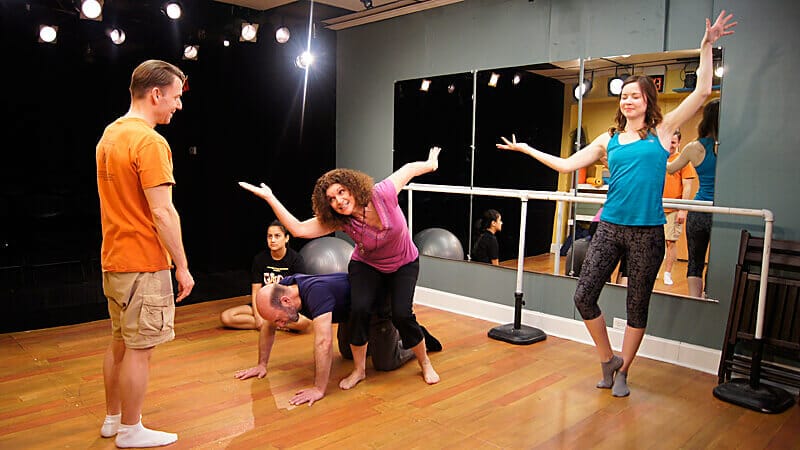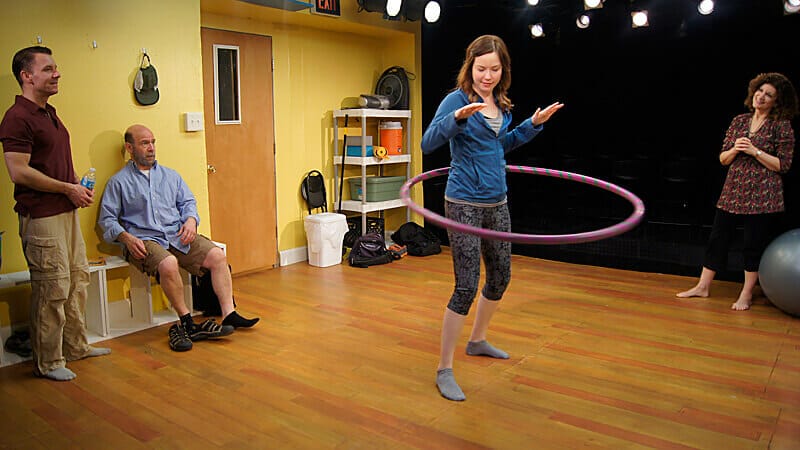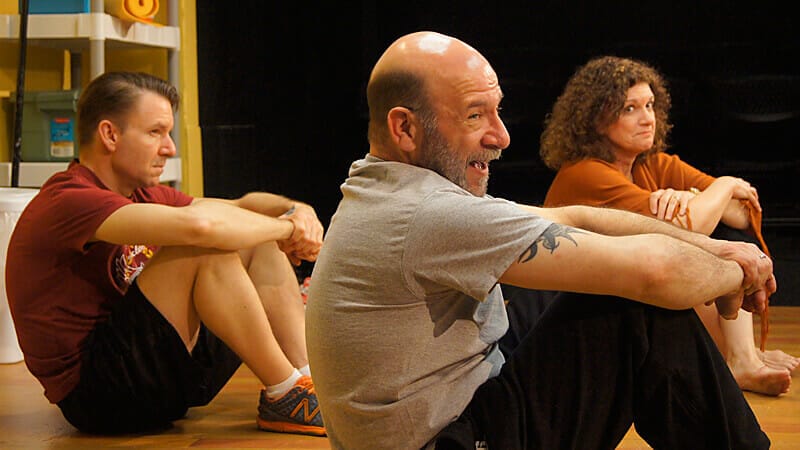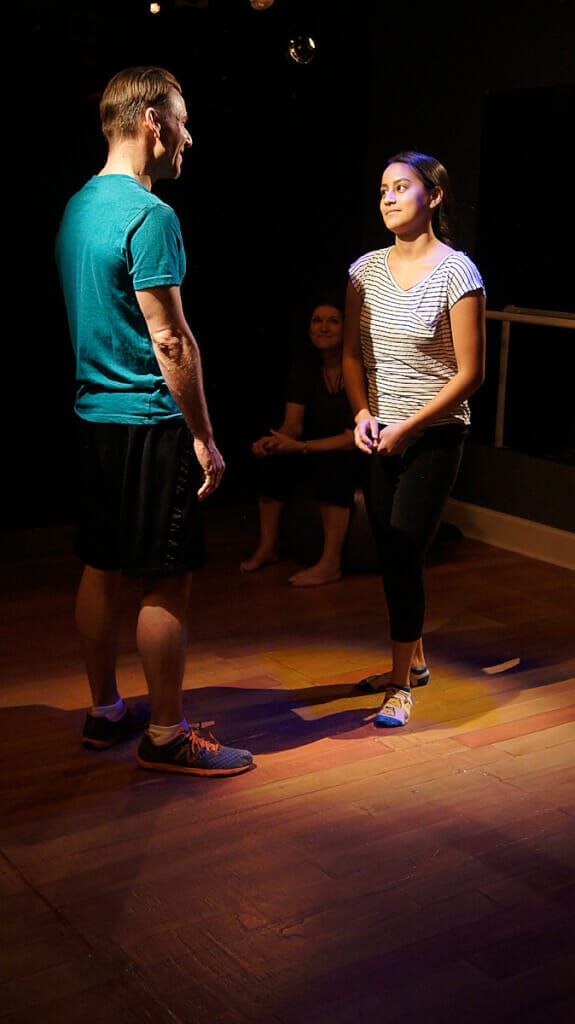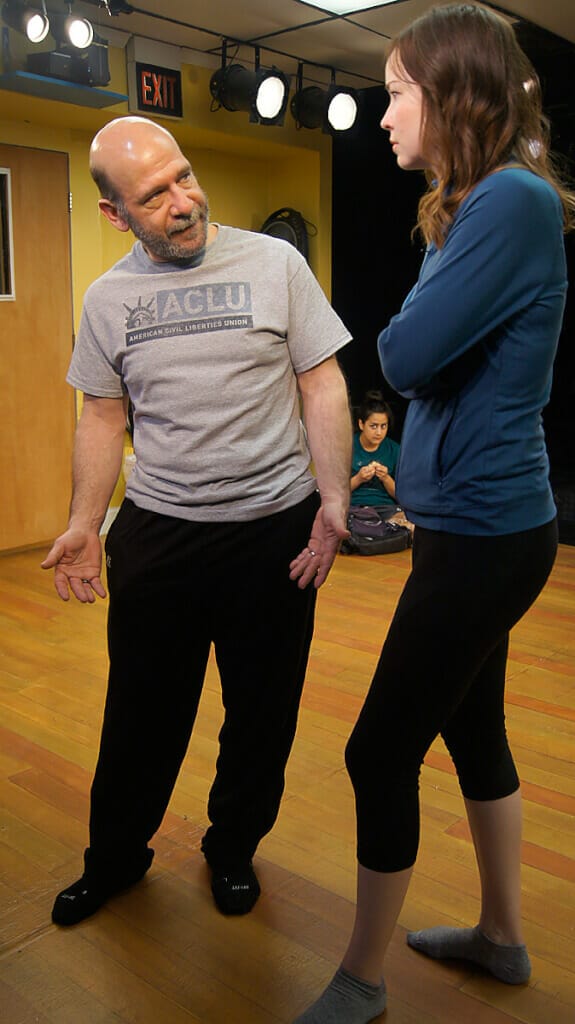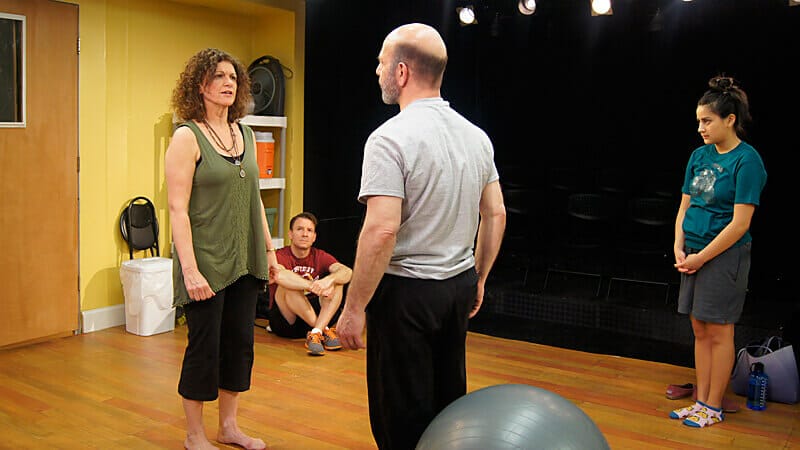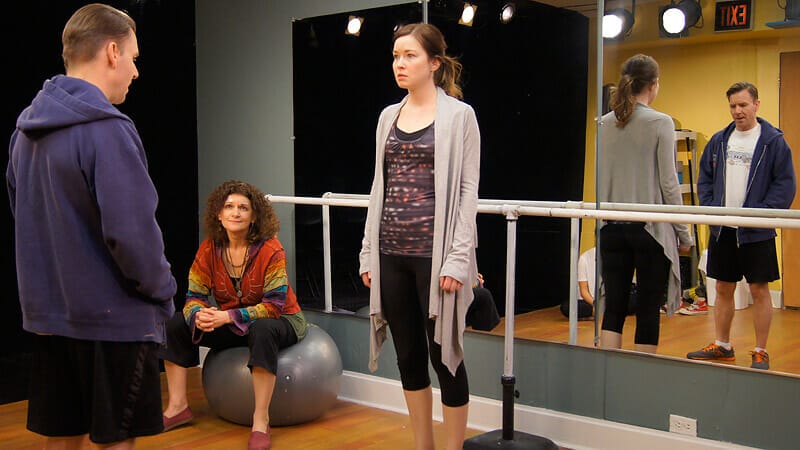Baker’s Pace for a Very Particular Taste
Annie Baker’s work is very much love-it or hate-it. I count myself among those who love it, due to her ability to perfectly capture the natural rhythms and subtext of real conversations and replicate them on the page, providing room for actors to find the absurdity, humor, unpleasantness, and mortifying awkwardness of mundane, quiet moments. She understands that these moments usually contribute more to peoples’ relationships than the high-intensity battles other playwrights focus on, and it is extremely rare for her characters to explicate their rich inner lives. But for the same reason, a lot of people find her plays meandering and pointless. (Baker is also an adaptor of Chekhov.) Circle Mirror Transformation, now in a production at Redtwist directed by Scott Weinstein, adheres faithfully to Baker’s style to the delight of people who chuckle in recognition at the characters’ foibles and are fascinated by Baker’s ability to show peoples’ cores through such subtle means as a stammer or a pause.
A Redtwist on the Vermont Cycle
Circle Mirror Transformation is one of several plays Baker set in the fictional Shirley, Vermont, which is a super-liberal college town in a sedate bubble. There, Marty (Lynda Shadrake), a middle-aged hippie, teaches a drama class at a community center. Her students are her husband, James (Adam Bitterman), a previously-married leftie professor, Theresa (Emily Tate), who recently quit acting in New York to become a massage therapist, Lauren (Talia Payomo), a sixteen-year-old who hopes to get a leg-up in her school drama club, and Schultz (Michael Sherwin), a lonely, recently-divorced man who is near the end of his youth.
To Lauren’s chagrin, Marty’s style of teaching to focus exclusively on games and exercises that are meant to help actors become more aware of their bodies and to cultivate their instincts for shaping their emotional responses. Lacking scene work or discussions of technique, it’s probably not the kind of class the characters imagined, though they all stick with it. The games, including the titular “Circle, Mirror, Transformation,” in which actors are taught to mimic each other’s energy levels, are even goofier to watch than they are to play.
The Startling Power of Improv
However, these exercises, when done seriously and not just as a means to make the other players laugh, force the participants to reveal quite a lot of their hidden shame and confusion. Theresa and Schultz, the two characters who were aware that they had inner turmoil before signing up, are initially drawn to each other, but the souring of their relationship early on makes the entire class deeply uncomfortable for the remaining weeks they are stuck together. At one point, James is called upon to act out what he imagines Theresa’s controlling ex-boyfriend was like. Being put in the role of a bad guy makes the scene as difficult for him as it is for her, as he is already feeling defensive about one of his own familial relationships and Marty’s role in it. It quickly becomes apparent that all the characters have a lot more emotional baggage to channel into their improv than they thought they did.
Director Scott Weinstein often displays a knack for managing the delicate timing of ensemble interactions. This time is no exception, as he has an ideal ensemble of actors. Although the way in which the characters wound each other is frequently amusing due to their cluelessness and the bizarre artificiality of their lessons, all five are quite lovable in their deeply flawed ways. Marty doesn’t dominate the others in attitude or in stage-time and is regularly caught off-guard by the minor crises she contributes to, but her supportiveness and optimism are crucial to why the characters are willing to be as vulnerable as they are.
The Necessity of Subtext for Capturing Life
Though most people are probably somewhat familiar with the kinds of lessons Marty teaches, actors are obviously the most likely to recognize the kinds of interactions at work here. Watching how exposed the characters are even under a benevolent teacher, it is frightening to think of how easily a cruel person could have exploited them.
Baker’s play can be thought of as a tribute to the work actors do, not when they are enjoying the attention of a room, but when they are taxing themselves in rehearsal spaces such as the set designed by Elyse Balogh on experiments that may not even pan out. Because Baker is able to capture dialogue so accurately, her play is a fascinating look into a world that is usually hidden from us. But it’s also an insight into how much drama is often bubbling below the surface of an ordinary, outwardly unremarkable life.
Highly Recommended
Note: This is now added to the Picture this Post round up of BEST PLAYS IN CHICAGO. Click here to read — Top Picks for Theater in Chicago NOW – Chicago Plays PICTURE THIS POST Loves.
Note: An excerpt of this review appears in Theatre in Chicago.
When
Now through May 14
Thursdays, Fridays, and Saturdays at 7:30 pm
Sundays at 3:00 pm
Where
Redtwist Theatre
1044 W Bryn Mawr
Chicago
Tickets
$30-35, with discounts for seniors and students.
To order, visit redtwist.org or call 773-728-7529
Photos: Jan Ellen Graves
About the Author: Jacob Davis

Jacob Davis is a freelance writer and dramaturge. He is a graduate of the University of Illinois at Urbana-Champaign’s Department of Theatre, where he specialized in the history of dramatic literature and interned as a dramaturge for Dance Heginbotham. His professional work includes developing new performance pieces such as The Blues Ain’t a Color. Since moving to Chicago in 2014 he has reviewed theatre, written articles, and conducted interviews for a number of websites.
Save
Save
Save

